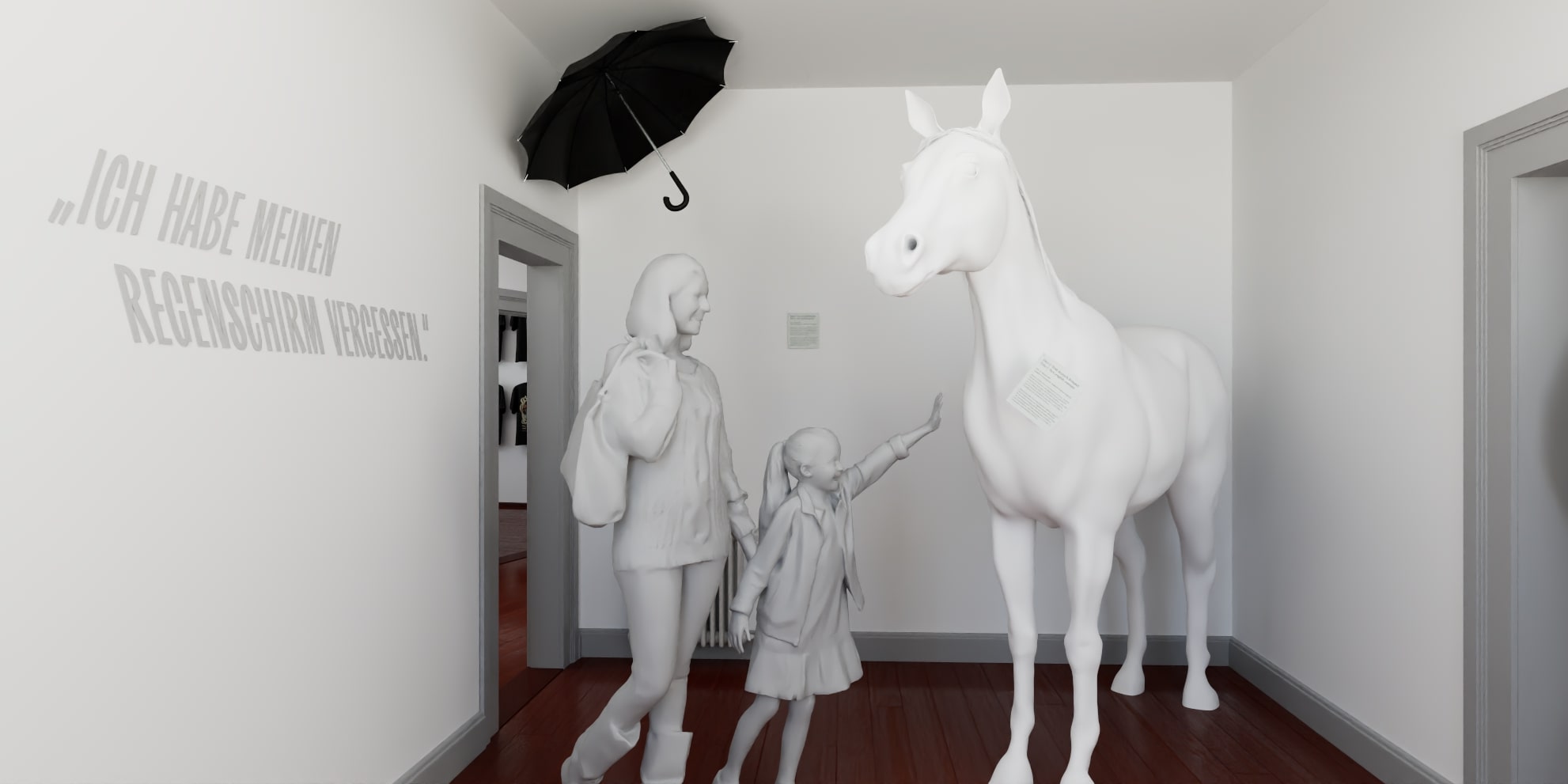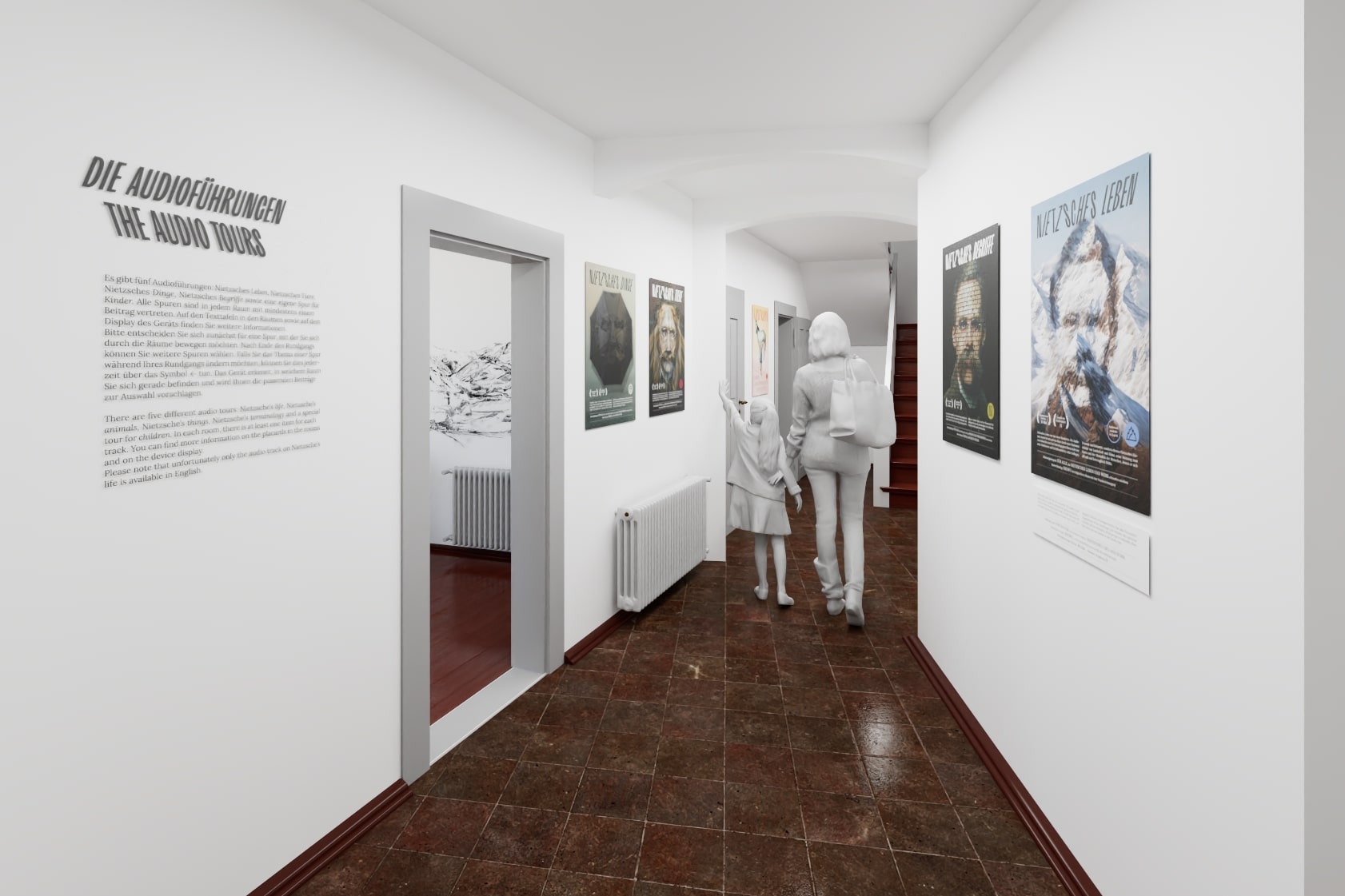
Headline Austellung
Headline zweite Zeile
“Friedrich Wilhelm Nietzsche (1844–1900) is one of the best-known philosophers in the world. He spent parts of his childhood and youth in Naumburg, before heading out into the world in 1864 – initially as a student and then as a university professor – to change peoples’ thinking.
The house at Weingarten 18 remained a home for him that he visited regularly. Following his breakdown in 1889, he returned permanently and spent most of his last years here as an invalid requiring constant care.
The exhibition is dedicated to the life and thinking of Friedrich Nietzsche. There are no personal belongings or original items of furniture on display in the small rooms of his home. Instead, the exhibition invites visitors to follow the Nietzsche phenomenon, which still occupies the world today, along various different paths.
What is the significance of the mole on the wall? Why is there an umbrella hanging from the ceiling? What does a Nietzsche composition sound like? What are these shadows? How heavy were the books that he travelled around with? Behind each exhibit lies a different quote and a different facet of Nietzsche’s life and way of thinking.
There are five audio tours through which to explore these: Nietzsche’s life, Nietzsche’s animals, Nietzsche’s things, Nietzsche’s terminology as well as a special tour for children (or anyone who is perhaps still a child at heart).”

Nietzsche’s life
Nietzsche lived the life of a wanderer. The audio track takes you on a journey through the phases of his life – from his birth through to his death. On the way, you will not only encounter his places of study and work, colleagues, friends and acquaintances, but also Nietzsche’s impressions of the landscape and climate, his opinions on food and the mentality of the people to whom he often felt close and yet distant at the same time.
Nietzsche’s animals
Animals make regular appearances in Nietzsche’s texts: the bear, the ass, the snake, the spider and many more. The philosopher uses them and the characteristics typically attributed to them – laziness, aggression, a keen eye, good nature or excessive strength, for example – to contemplate what people were, what they are and what they could be in the future.
Nietzsche’s terminology
Nietzsche coined terms and formulations that are not only an integral part of philosophy today, but some of which have also found their way into everyday usage: You nihilist! God is dead! The Übermensch! But what do they mean?
Nietzsche’s things
Nietzsche knew that the things created by people – art, technology, culture – have a fundamental influence on thinking. And they allow us to look at things differently than at other times. From glasses to musical instruments and stoves to typewriters – they have all left their mark in Nietzsche’s philosophy.
Children’s track
Friedrich Nietzsche’s thinking is not something highbrow that is only interesting and comprehensible for professionals. His philosophy is concerned with questions that each and every one of us will ask ourselves during our lifetimes – whether we’re 5, 15, 50 or 95 years old. A philosophy for everyone and no one!
Hörprobe: In Nietzsches Welt
Hier können Sie einen ersten Eindruck von den Audioführungen der Ausstellung gewinnen: Gedanken und Stimmungen des Philosophen, seinen Notizen, Briefen und Werken entnommen.


